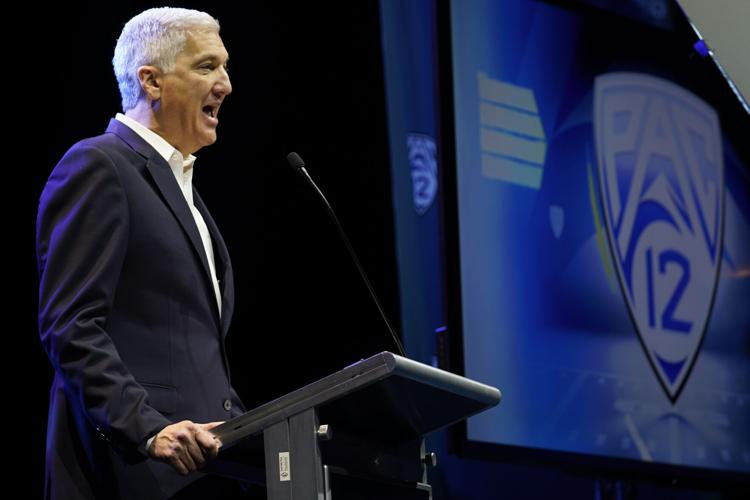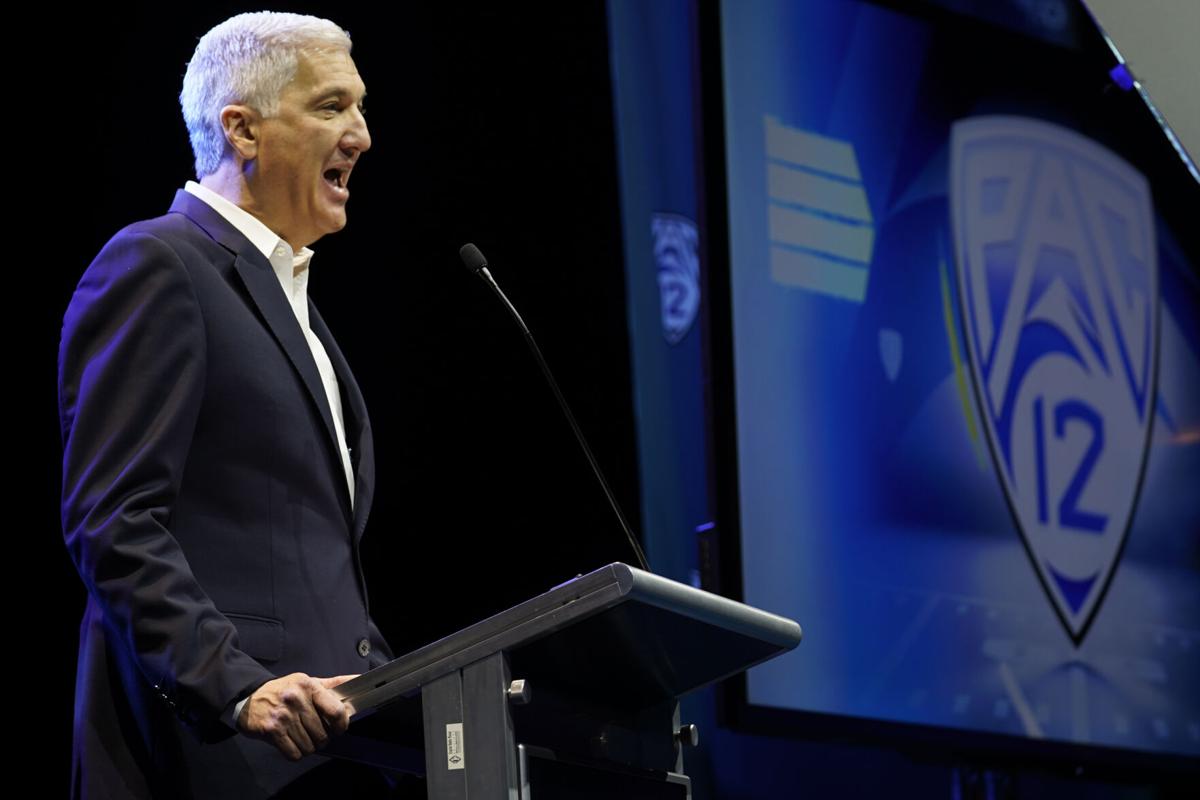Commentary on Pac-12 developments on and off the field:
Falling: Likelihood of swift closure
Thursday marks an important milestone in the Pac-12’s rescue operation. Unless it doesn’t.
On July 5, the presidents and chancellors authorized commissioner George Kliavkoff to formally begin negotiating a new media rights contract that would begin in the summer of 2024.
The terms of the current agreement with ESPN and Fox provide those networks with an exclusive 30-day negotiating window. If no deal is reached, the Pac-12 has the option to seek bids on the open market.
If we presume the exclusive window opened the day after Kliavkoff received authorization, Thursday marks the 30th day. The Pac-12 should have a formal offer in hand.
Unless it doesn’t. Our guess is the 30-day window won’t close for many weeks.
Why? Because of the Big Ten. The conference that recently yanked the heart out of the Pac-12 did so during the middle of its own media rights negotiations, which are expected to conclude this month.
For context on the Pac-12’s process, consider this: The Big Ten’s exclusive 30-day window with ESPN began approximately six months ago, according to the Sports Business Journal. After that window closed with no deal, it was another three months on the open market (give or take) before the Big Ten added USC and UCLA.
Five weeks later, no closure.
It’s the 30th day (presumably) of the Pac-12’s exclusive window with ESPN and Fox, and the Big Ten is still immersed in negotiations with the same networks.
Our guess?Either ESPN and Fox have asked the Pac-12 to extend the exclusive window, the Pac-12 asked its partners to extend the exclusive window, or both sides reached that conclusion independently. After all, the Pac-12 would want to know which networks grabbed a piece of the Big Ten’s media rights and which did not. And ESPN and Fox would want to know exactly what they’re spending on the Big Ten.
Exactly how long an extension might last, we cannot speculate. But if the Big Ten serves as a guide, and if we assume the Pac-12 will take its rights to the open market, our strong suspicion is the process will last well into September and perhaps through the bulk of the football season.
So disregard the calendar. There probably won’t be news today, tomorrow, next week … or the rest of this month.
Neutral: Reception to Kliavkoff’s performance
The second-year commissioner received mixed reviews for his state-of-the-conference address last week in Los Angeles.
It included a shot or two at the Big 12 and a candid remark about the resistance UCLA could face with its move to the Big Ten.
Many fans and media outlets opined that Kliavkoff was too feisty — CBS Sports even described him as “angry.”
Admittedly, the Hotline was surprised by his response to a question about the Big 12: “With respect to the Big 12 being open for business, I appreciate that. We haven’t decided if we’re going shopping there or not yet.” (Yikes.)
We have two takeaways:
1. The prepared remarks were diplomatic; Kliavkoff only sharpened the arrows during the Q&A with reporters, when that approach feels a tad more palatable.
2. He doesn’t care what the fans and media think because the performance was designed to appeal directly to his membership.
After USC and UCLA were admitted into the Big Ten on June 30, the Pac-12 stayed silent for four weeks as the Big 12 owned the national narrative. As a result, Kliavkoff had to present a unified, aggressive stance in his first public remarks in order to satisfy stakeholders who wanted top-down support.
So we understand the mixed reaction from the national audience which, in this case, wasn’t the intended audience.

Rising: ASU’s NIL involvement
Arizona State fans might recall comments early this year from Ray Anderson in which the longtime athletic director noted his department would not “get in an arms race with the new free agency and the new pay-for-play (NIL) structure that is now very prevalent.”
As name, image and likeness collectives sprang up coast-to-coast to compensate current players — or lure recruits — it appeared the Sun Devils would be on the sideline.
Six months later, a group of ASU donors has created the Sun Angel Collective. Designed to provide NIL opportunities for athletes, it’s an important development for the Sun Devils, particularly for a football program under investigation for recruiting violations.
Whether or not the NCAA levies sanctions, an economic support structure is in place to navigate the NIL era.
Many donor collectives, in the conference and across the country, are serving the intended purpose: They provide endorsement and promotional opportunities for existing college athletes.
Others are using their pooled resources as illicit roster-building mechanisms, luring high school recruits and transfers with bags of cash.
And why not? The NCAA’s enforcement process is the weakest of sauces. (The going rate for an elite quarterback on the NIL market is roughly $2 million, with receivers and edge rushers not far behind.)
This above-board black market won’t disappear without congressional oversight or a massive correction. At some point, the community business leaders fueling collectives will realize a backup left guard isn’t worth $50,000. Until then, anarchy is the law of the land.
The Sun Angel Collective reportedly has secured $1 million in funding, and ASU’s alumni base should produce a larger pool over time.
We don’t expect it to match the top tier of collectives, like Oregon’s Division Street (fronted by Phil Knight) or Texas A&M’s oil-money machine. But it’s good news for ASU and for the conference, which needs as many deep-pocketed collectives as its membership can muster.
We suspect there will be more news on this front as the season approaches.






